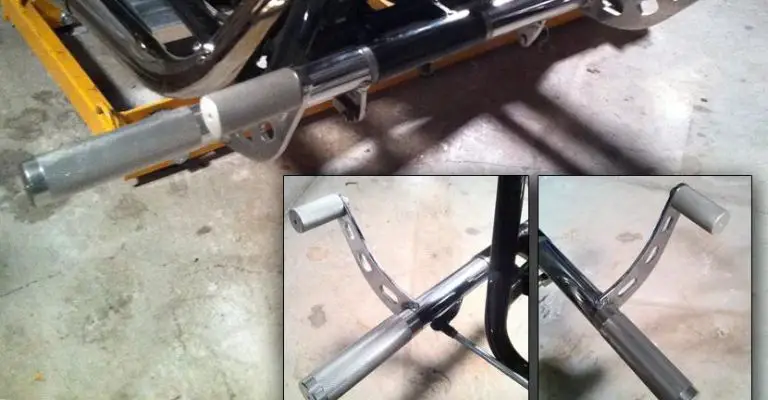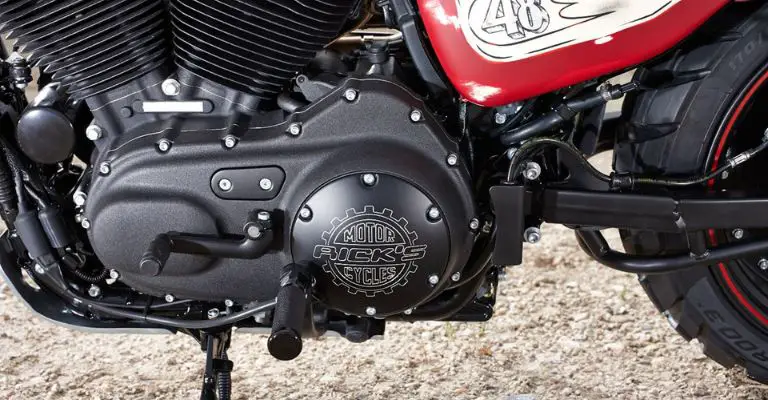Imagine cruising down an open highway, the roar of your Harley Davidson melding with the wind – but how you experience this ride depends significantly on one crucial choice: forward controls or mid controls. This decision not only defines your comfort and control but also stamps your signature on the bike’s style, so it’s important to consider their unique features and benefits. Are you the laid-back cruiser, stretching out and soaking in the scenery, or the agile rider, commanding every turn with precision? In this deep dive, we unravel the nuances of forward and mid controls, guiding you through a journey that’s about much more than just foot placement. It’s about how you connect with your ride, how you feel on the road, and ultimately, how you define your riding identity. So, buckle up as we throttle into the heart of what makes your Harley ride uniquely yours.
Forward Controls Overview
Forward controls are primarily found on cruisers and choppers. They are designed to offer riders a more relaxed and comfortable posture, making them ideal for long-distance riders who prefer to stretch out. Harley Davidson models with forward based controls include the Softail® Standard, Street Bob® 114, Fat Bob® 114, Low Rider® S, Low Rider® ST, Fat Boy® 114, and the Breakout® 117.

The main advantage of the forward control configuration is the comfort it provide, especially for taller riders. They allow the legs to stretch out and offer more space for larger feet. Moreover, the seating position is more laid-back, reducing lower back stiffness.
Mid Controls Overview
A mid control configuration, on the other hand, offer a more aggressive riding experience. They are designed for riders who prefer a more athletic riding posture and enjoy a more responsive and controlled ride. Some Harley Davidson models that feature a mid control setup include the Street 750, Sportster® S, Road Glide®, Street Glide®, Road King® Special, Road Glide® Special, Street Glide® Special, Road Glide® Limited, Ultra Limited, and the Road Glide® ST.

Mid controls are positioned in the middle of the bike, directly under the rider’s seat, making them easily accessible for riders of shorter stature. They provide better control over the bike, which is especially advantageous in situations requiring quick reactions.
Similarities and Differences
Both forward oriented controls and mid controls aim to enhance the rider’s comfort and control. While they are designed differently and cater to different riding styles, they share a common goal: to make the riding experience as enjoyable and safe as possible.
In terms of differences, the primary distinction lies in the riding posture. A mid control orientation promotes a more upright posture, ideal for aggressive riding and cornering. On the other hand, a forward control configuration encourages a more relaxed, laid-back posture, perfect for long rides and cruising.
Their Impact on Appearance and Style
The choice between forward and mid controls goes beyond functionality; it significantly influences your bike’s aesthetic. Forward controls give your Harley a classic, stretched-out cruiser look, emphasizing a laid-back style. In contrast, mid controls offer a sportier, more aggressive appearance, aligning with a dynamic riding stance.
Handling and Control Differences
While forward controls offer a relaxed experience ideal for long rides, they may provide less control in quick maneuver scenarios. Conversely, mid controls excel in offering superior handling and control, especially in traffic and on winding roads, making them a preferred choice for riders who prioritize agility and responsiveness.
Read next: Does Harley Davidson Make Automatic Motorcycles?
Is One Better Than The Other? Let’s Talk About It
When it comes to choosing between forward controls and mid controls, it largely depends on the rider’s preference and riding style. If you’re a long-distance rider who prefers a relaxed posture, a forward control configuration may be the better choice. However, if you’re an aggressive rider who craves control and responsiveness, a mid control setup may suit you better. Keep in mind that it also depends on the bike. For example, Harley’s V-Rod had forward controls but was a performance minded “muscle bike”, so it would be mostly be riding in a straight line. Still, this configuration received many complaints from V-Rod owners.
Comfort Levels
Comfort is a significant factor to consider when choosing between forward controls and mid controls. While both types aim to provide comfort, the level of comfort they offer can vary depending on the rider’s height, riding style, and personal preference.
A forward control setup is generally more comfortable for taller riders, as they allow for leg extensions, reducing lower back stiffness. On the other hand, a mid control configuration is often more comfortable for shorter riders, as they position the foot controls directly under the rider’s seat, reducing the reach to the bike’s foot controls. If you’re a taller rider, you may be more comfortable when you lean forward. Otherwise, a shorter rider may prefer the convenience in the mid control configuration.
The Impact of Height in Which is Better For You
Your height plays a crucial role in choosing between forward and mid controls. Taller riders may find forward controls more comfortable, allowing for a stretch-out posture, while mid controls are often more suited to shorter riders, providing easier reach and better bike control.
Visibility
Both forward and mid controls contribute to the bike’s overall visual appeal. However, the choice between the two can impact the bike’s appearance. The forward control orientation lends itself a more relaxed and laid-back look to the bike, which many cruiser riders appreciate. In contrast, mid controls give the bike a more aggressive and sporty appearance while offering marginally better control, may be preferred by sports bike enthusiasts.
Accessibility (Ease of Further Installations)
When it comes to installing additional features or performing maintenance, the type of controls can make a significant difference. Mid control configurations are generally easier to work with, as they are located directly under the rider’s seat, providing easy access. In contrast, the procedure for installing forward controls, which leaves you positioned further from the rider’s seat, may require more effort to access and work with. However, to some, it may be worth it once they have the forward controls installed.
[su_youtube_advanced url=”https://www.youtube.com/watch?v=Lzxxv0xa4EI”]
Forward Controls vs Mid Controls: Exhaustive Pros and Cons
Just like any other feature, forward controls and mid controls have their pros and cons. In a nutshell, the main advantages of forward controls on a motorcycle include greater comfort for taller riders and a more relaxed riding posture. The primary drawbacks include less control over the bike and potential difficulty in accessing the controls for shorter riders.
On the other hand, motorcycles with mid controls have better control over the bike, a more aggressive riding posture, and easier access for shorter riders. However, they may be less comfortable for taller riders and those who prefer to stretch out during long rides.
Which Do I Recommend? It Comes Down To Preference
As an experienced biker, I can say that both mid and forward controls have their benefits and drawbacks. The choice between the two largely depends on your personal preference, riding style, and physical attributes. If you’re a tall rider who enjoys long, relaxed rides, forward controls may be the better choice. However, if you’re a shorter rider who enjoys aggressive riding and values control and responsiveness, mid controls may suit you better.
More direct comparisons:
> Harley 96 vs 103
> Harley 103 vs 107
> Harley 107 vs 114
In conclusion, whether you choose mid or forward controls, it’s about matching your riding preferences and style. Each type offers a unique blend of comfort, control, and aesthetics, shaping your Harley Davidson experience.